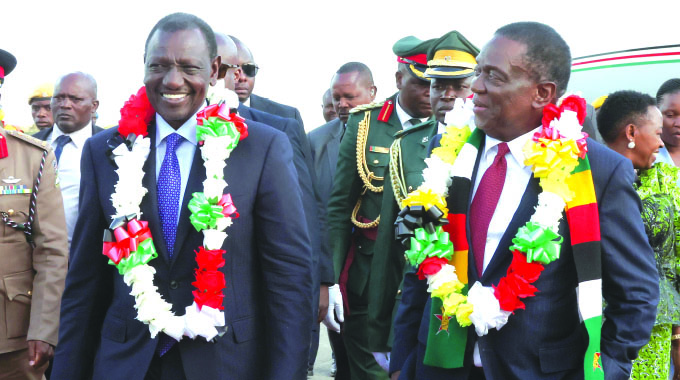Government committed to a landmine-free nation

Columbus Mabika and Rumbidzai Mushonga
Zimbabwe on Thursday held belated commemorations for International Day for Mine Awareness in Harare amid calls for increased funding to demining operations for the country to achieve total freedom, 44 years after the liberation war ended.
The settler regime laid huge minefields of anti-personnel mines along the borders 6 percent of these unmapped fields are still there and the mines are still active.
The day is commemorated every 4th of April to raise awareness on mine removal and remind the population of the danger that landmines pose all over the world.
This year, the day was running under the theme “Protecting Lives. Building Peace”.
Addressing delegates gathered to commemorate the day, Minister of Defence Oppah Muchinguri-Kashiri said Zimbabwe remained committed to a landmine-free society which was key to the achievement of national development as the nation gears towards attaining an upper middle-income status by the year 2030.
“Our focus on fully clearing the remaining landmines was by December 2025 but due to some financial gaps it is no longer realistic to achieve. We remain optimistic that by 2027 Zimbabwe will be landmine-free,” she said.
“We owe this success to a high level of commitment and cooperation between ourselves and our cooperating partners. However, dwindling resources have been identified as the elephant in the room that militated against our ability to achieve our target in the past,
“I want also to mention that 94 percent of all mines across the country have been removed. These mines were dotted in Manicaland, Masvingo, Mashonaland West, Mashonaland Central, Mashonaland East, and Matabeleland North.
“As I speak, we only have smaller portions remaining. We remain determined that we will clear all these mines. People living in the affected areas live in fear until we successfully address the problem.”
Minister Muchinguri-Kashiri said the cleared land will play a pivotal role in many facets of the economy such as agriculture and tourism.
Memory Musipa of Halo Trust, one of the mine clearance companies in the country, said demining had brought a new lease of life in affected communities.
“The impact of mine action operators extends far beyond the physical act of demining. Their work brings hope to those who have been affected by the devastating consequences of landmines, including injury, displacement, and loss of livelihood. By clearing these deadly remnants of conflict, mine action operators are instrumental in building a future free from the fear of landmines, allowing communities to rebuild and prosper,” she said.
David Jairosi of Nyamapanda Border Post area, who lost his right leg after stepping on a landmine in 2002, said it was important that communities are taught the dangers of these lethal remnants of war.
“These landmines are a real danger to both humans and wildlife. Although these mines may affect all of us, the most vulnerable are women, children, and elderly who live in fear day by day,” he said.
Staring defeat by the liberation war fighters, Rhodesian leader Ian Smith’s regime laid these large minefields of anti-personnel mines along the country’s borders in an unsuccessful bid to prevent the liberation forces from entering Zimbabwe and also preventing recruits from crossing the borders to join the war. The small number of anti-vehicle mines laid by liberation forces were along roads, and these were cleared by the March 1980 elections.
The Zimbabwe Defence Forces and its demining partners have cleared more than 291 square kilometres of landmines, leaving less 19,4 square kilometres still to be cleared since the inception of demining operations.
The clearance has been difficult as the anti-personnel mines tend to be small and shift easily when it rains.
The minefields were never properly mapped by the Smith regime and so have to be cleared very carefully, one mine at a time.
Zimbabwe is among countries with the highest density of landmines in the world, statistics provided by an international organisation have shown.








Comments